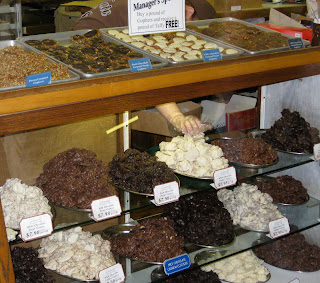General James Oglethorpe from England colonized Georgia. His idea was of a society where no individual could own much land and everyone worked for the betterment of the others. It sounded good, but countries like Russia can tell you this plan doesn’t work. He also had restrictions as to who could settle, such as no Catholics, (they may side with the Spanish who were also colonizing the east coast), no lawyers, (they stirred up too much trouble), no hard liquor, and they could not own slaves. (the reason being it made the owners lazy, not because he had any concern for the Africans)
He believed his dream failed and he ended up going back on each of his restrictions. Many colonists died from sickness and the colony needed laborers so he allowed Catholics to settle. At one point half of the population in Savannah was Irish. Today the St. Patrick’s Day parade is second only to New York’s in size.
The people stirred up so many problems on their own, that he had to allow lawyers to come to Georgia to settle the disputes.
And colonists purchased land of their own and brought it slaves to work it.
He did much good though. When he set up the design of the colony it was based around 4 squares, which were parks. Eventually there were 24 squares and 21 of them still remain. And the squares are breathtaking. Each square we wandered through we found many others enjoying them.
He also had a good relationship with the Indians and tried to nurture that relationship in the colonists.
Despite Oglethorpe’s distrust of Catholics, this beautiful church was eventually built and faces one the squares. It is St. John the Baptist church. It is open to the public so we went inside.

Next to the church is this cemetery. The last burial in it was 1853. During the civil war Sherman’s troops broke off many of the stones and threw them in a pile to clear space to pitch tents. So although it is known who all is buried there, they just don’t know where.
There were quite a few of these brick crypts. They are built in the shape of a bed to symbolize everlasting rest. Entire families are buried in them, one on top another.
We ended the day down by the river. At one time the large brick buildings were warehouses storing goods to be shipped. With the collapse of the cotton industry all this was pretty much abandoned. The area has been restored and now houses shops, pubs and eating establishments.
The streets in this area are all made from the stones that were used as ballast in empty ships. The ships needed weight in the holds so used stones. When they arrived in port, they disposed of them on shore and filled their empty ship with goods. Must have been a really rough ride in a carriage or even on a horse.
Okay, enough history for one day. Let’s go to the candy store!!!
Ross sampling a praline.
"Needs chocolate."
Wow, my kind of apples!!
The pink and white cigar shape on the wooden rollers is taffy.
Taffy being “pulled”.
Something for everyone, even if you’re a dog. These are Milkbones that they dip in a combination of peanut butter and white chocolate.
So many choices……..
Ended up leaving with a treat called “Gophers”. They were a combination of crushed pecans and caramel and then a swirl of dark chocolate spread on the top. Mmmmmmm.
For dinner we walked a couple of blocks to Tubby’s Tankhouse. Had a good meal and listened to a band.


































